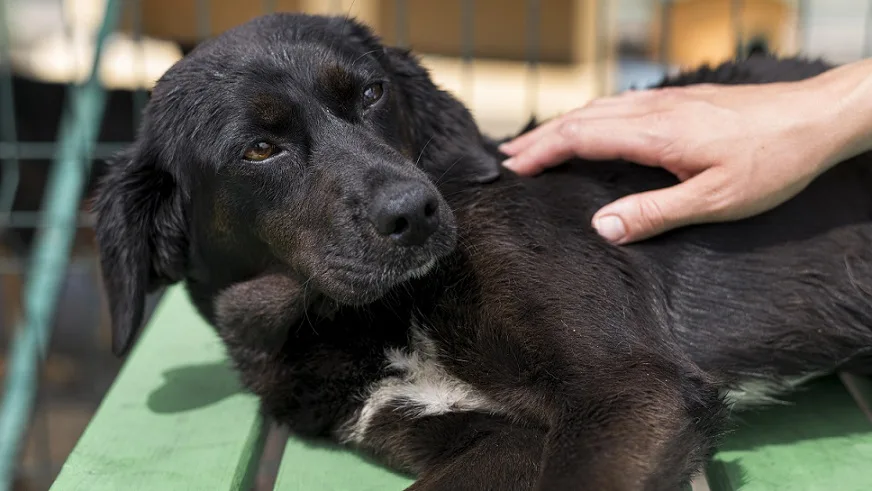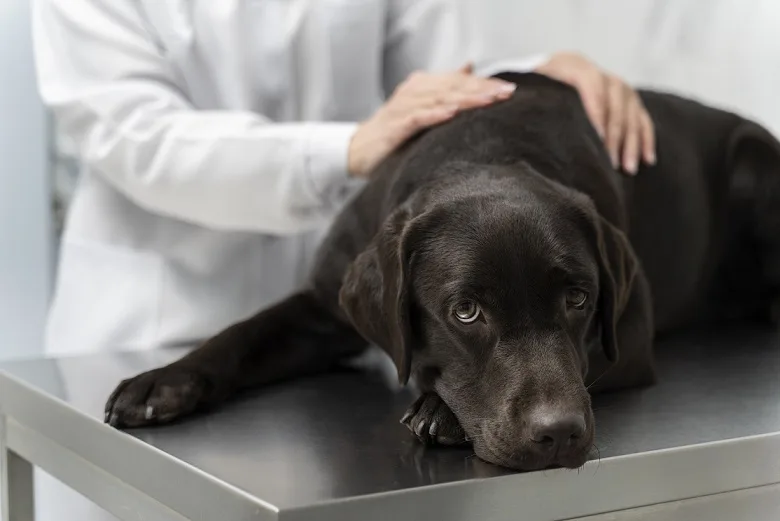How to Treat Dog Anus Bleeding
If you find that your dog is bleeding from the anus, you should probably be worried. Responsible dog owners must understand the likely sources, signs, and suitable solutions. So they can stop a dog from anus bleeding. In this blog. We’ll examine the problem and provide tips on how to get medical care. Find effective treatments and take safety measures.
Introduction: Addressing a Delicate Issue
Sometimes our animal friends may have health problems that need quick care. Dog anus bleeding is one such problem that may be upsetting for both the pet and the owner. So, let’s get started. Also, make sure our canine friends get the care they need!
See also: Best 6 Effective Ways on How to Get My Cat to Stop Meowing
Understanding Dog Anus Bleeding

Dog anus bleeding may be mild to severe and can happen for several reasons. But knowing the main causes and signs can help you deal with the problem quickly.
See also: How to Stop My Dog from Biting When Excited: 7 Best Ways
Causes of Dog Anus Bleeding
- Anal Gland Issues: Anal gland diseases. Such as impaction, infection, or cysts, are one of the main reasons for dog anus bleeding.
- Fecal Issues: Conditions like diarrhea. Or extreme pushing during bowel movements. Such conditions may hurt or damage the anal area and cause blood.
- Parasites: Intestinal parasites. Such as worms, may upset and inflame the dog’s stomach system. Which can lead to anus bleeding.
- Injuries or Trauma: Accidental crashes, rough play, or damage to the anal area may cause blood.
- Tumors or Polyps: Rarely, rectal tumors or polyps may result in bleeding.
Symptoms of Dog Anus Bleeding

- Visible Blood: See the blood on the dog’s stool. also in the hair around the anus. Or on the furniture where the dog sits or lies down.
- Excessive Licking: Due to the pain or soreness that bleeding may cause. Dogs may lick their anal area excessively.
- Pain or Discomfort: Dogs may show pain, discomfort, or trouble. While sitting or having bowel movements.
- Changes in temperament: Dogs that are bleeding from the anus. May show alterations in their food habits. Also, levels of energy or general attitude
Seeking Veterinary Care

It’s important to visit a doctor for a rapid diagnosis and treatment plan when your dog has anus bleeding. Protect the health of your pet, and medical care is useful.
See also: Top 10 Best British Birds Of Prey 2023- Rabt Corners
Initial Assessment
The vet will check your dog’s anus during the first examination. Look for any obvious cuts and ask questions about the kind and amount. Also, observe other relevant signs of bleeding.
Diagnostic Procedures
The physician may offer testing methods. The following will help identify the root cause of the anus bleeding:
- Rectal Exam: During a rectal exam, the doctor may measure the health of the rectum, anus, and anal glands.
- Fecal Analysis: A study of a fecal sample might show any bugs or odd germs that may be causing the bleeding.
- Blood testing: Blood work may provide information about your dog’s health. It also provides a look at any underlying problems.
- Imaging: In some cases. Imaging methods like X-rays or ultrasounds may be necessary to assess the rectal area.
Therapy Alternatives
See also: How to Get Dog Hair Out of Your Car: 10 Most Effective Ways
Treatment Options
The severity and basic reason for anal bleeding will determine the best treatment. The following are some basic treatment options:
1. Therapies
To treat particular conditions that are the cause of the bleeding. Medicines such as antibiotics, anti-inflammatory drugs, or deworming treatments are used.
2. Surgical Intervention
Sometimes surgery is done to remove tumors. Polyps, or serious anal gland diseases. As well as to treat the underlying problem.
3. Dietary Adjustments
Dietary changes. Such as increasing fiber intake or choosing a specific diet. It may help settle stomach problems that cause bleeding.
4. Soothing Topical therapies
The doctor can use gentle topical skin medicines to ease pain and speed healing.
Home Remedies for Dog Anus Bleeding

See also: Earth Rated Poop Bags: A Complete In-Depth Review
While medical care is enough for dog anus bleeding, Some home methods may provide brief relief. But it is useful to speak with your doctor before using any at-home treatments. Here are several possibilities:
5. Soothing Baths
To decrease pain and promote healing. Gently bathes the anal area with warm water and light, and pet-safe soaps.
6. Dietary Adjustments
A healthy meal with enough fiber for your dog can promote regular bowel movements. It also lowers the risk of constipation or diarrhea. Which may increase bleeding.
7. Topical Treatments
Relaxing ointments or creams may be applied to the damaged area. To provide comfort and speed healing.
8. Preventive Measures
Preventive steps will improve your pet’s general health. It lowers the likelihood of dog anemia.
9. Regular Vet Check-ups
Making regular visits with your vet. It allows for early discovery of any underlying problems and quick treatment. Also, avoid issues that might result in anus bleeding.
10. Hygiene and Grooming
The chance of pain may lower through practice. By maintaining proper cleanliness and cleaning practices. Such as regularly bathing the anal area and keeping the hair around the anus clipped.
See also: How to Get a Cat to Like You: 16 Ways to Purrfect Connection
Conclusion
Dog anus bleeding may be an annoying problem for pet owners. But it may be successfully treated with the right knowledge. Quick medical care and proper home treatments. But, don’t forget to visit an expert. Also, take preventative action. Provide your canine lover with a loving and cozy atmosphere.
See also: 10 Best Solutions on How Much Is It to Adopt a Dog?: A Guide
FAQs on How to Treat Dog Anus Bleeding
Q1. Can I treat my dog’s anus bleeding with over-the-counter medications?
A1: Using over-the-counter treatments without first seeing your doctor is not recommended. Finding and fixing the bleeding’s main cause is important.
Q2: How can I stop my dog from hurting its anal region?
A2: To protect relationships with other animals. Prevent rough play, provide a safe setting, and avoid hurt to the anal area. To avoid accidental damage, make sure your dog’s nails are cut.
Q3: Is there a particular breed that is more prone to dog anus bleeding?
A3: While bleeding may appear in any dog breed. Certain kinds may be more susceptible to specific bleeding diseases. To learn about possible risks particular to certain breeds, speak with your doctor.
Q4: Can food affect dog anus bleeding?
A4: Food has a major role in maintaining gut health. A well-balanced diet with the right amount of fiber promotes normal bowel movements. It also lowers the risk of stomach problems.
Q5. If my dog’s anus is bleeding, at what point should I be worried and seek medical care?
A5: It’s important to see your veterinarian to ensure proper evaluation and treatment. If you notice prolonged bleeding. Serious pain, behavioral changes, or any other worrying signs in your pet.
For more details about the article: Click Here
You can also read our most anticipated articles: How to Stop My Cat from Bullying My Other Cat: Top 10 Ways
See also: How to Make My Dog Vomit Without Hydrogen Peroxide: 6 Ways
Don’t forget to subscribe or click on the bell notification












